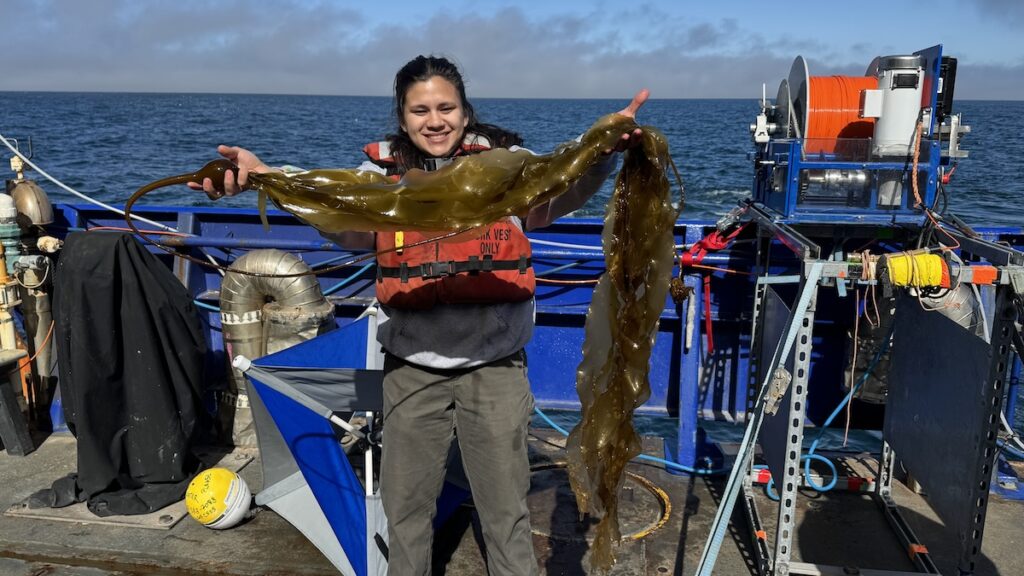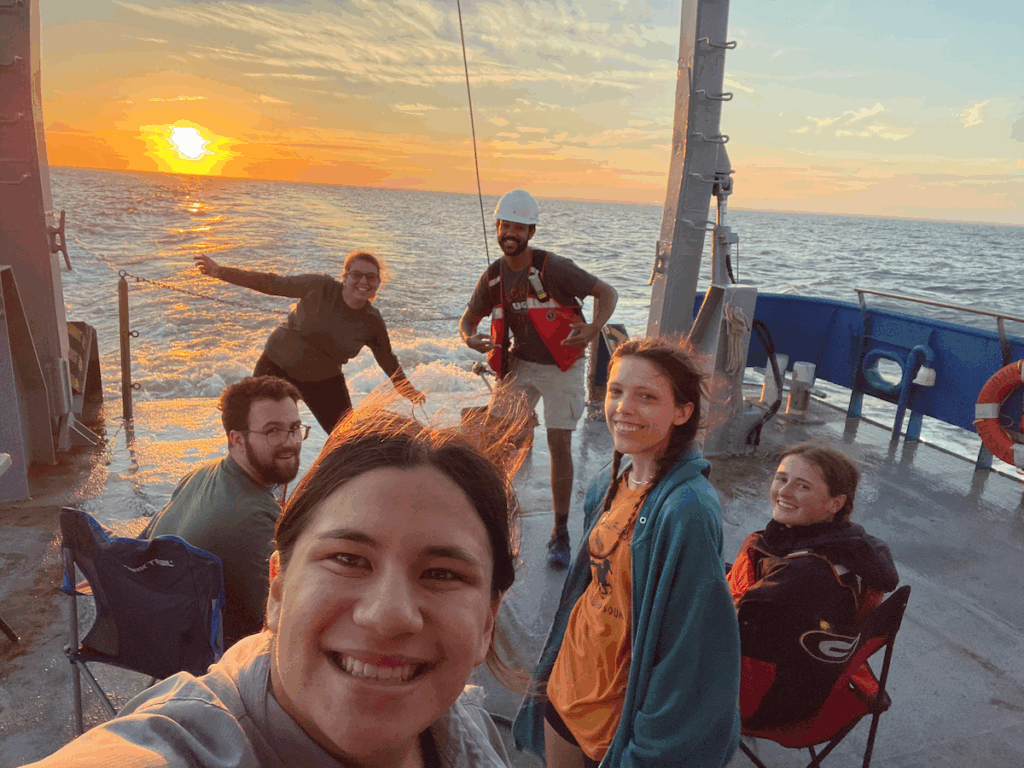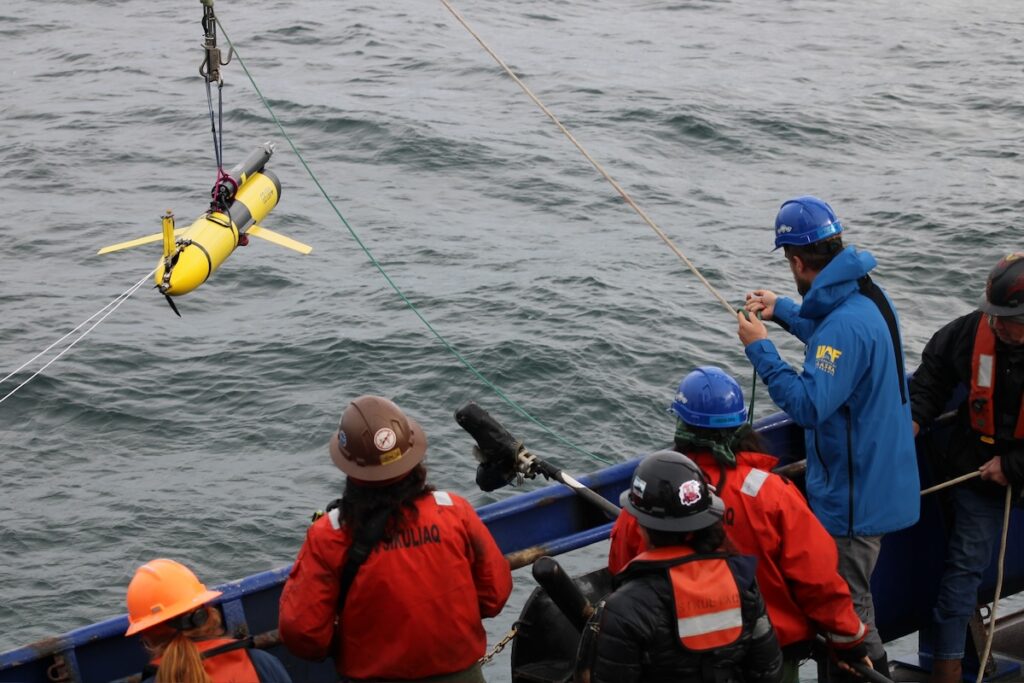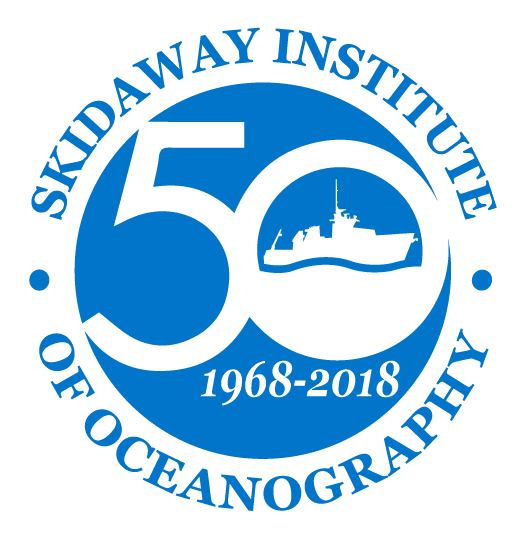
Ava Meier, who participated in the UGA Skidaway Institute of Oceanography’s (SkIO) Semester at Skidaway program in fall 2022 and received a bachelor’s degree in ocean science from UGA Franklin College of Arts and Sciences’ Department of Marine Sciences in 2023, is now pursuing her master’s degree at the University of Alaska Fairbanks’ College of Fisheries and Ocean Sciences.
Meier, a Conyers, Georgia, native, was recently listed as a co-author on a new manuscript published in JGR-Oceans titled “Drivers of Spatiotemporal Distributions of Macro- and Micronutrients (Fe, Ni, Cu, Zn) in the Northern Gulf of Alaska.” She studies physical oceanography.
SkIO: What are you researching at the University of Alaska Fairbanks, and who are you working with?
Ava Meier (AM): I am studying physical oceanography and working with Dr. Kay McMonigal and Dr. Seth Danielson as part of the Northern Gulf of Alaska (NGA) Long Term Ecological Research program (LTER). My work involves understanding turbulence as it relates to fronts in the NGA. Specifically, I look at the vertical structure of turbulence and related nutrient fluxes within and surrounding oceanic fronts. I just returned from a month-long cruise on board the R/V Sikuliaq, which focused on studying two significant fronts in the NGA. This was the first cruise that I collected data on for this project, so I’m working through some of that right now.

SkIO: What inspired your love for marine science and, more specifically, your track of study?
AM: I became interested in the ocean and its processes as a little girl when I went snorkeling with my family in the Florida Keys. Through repeated visits as I got older, I noticed the rapid decline of reefs in places that were once thriving. This sparked my interest in learning about what was causing this change and what we can do to slow it down and potentially prevent it.
SkIO: How did your time at SkIO/UGA influence your education/career path and prepare you for where you are today?
AM: I learned many different skills during my time at SkIO and UGA, both in the field and in the lab. Having prior research cruise experience on board the R/V Savannah really helped me feel prepared to spend a month at sea. I also felt prepared to be in a lab setting through my time in the various labs I was involved in during my undergraduate years.
SkIO: Being listed as a co-author on a manuscript published in JGR-Oceans is a great accomplishment, particularly as a master’s student. What does that accomplishment mean to you?
AM: This was a very exciting moment for me, because this is the first paper I have ever contributed to and had authorship on! I spent a lot of time learning new software and other concepts in order to contribute, so it was nice to see all that hard work pay off.

SkIO: Where do you see yourself in 5-10 years?
AM: I am planning on switching from a master’s to a PhD track and using this project as one of my chapters for my dissertation. Hopefully in 5-10 years I will be finished with my PhD and be in the midst of or just beginning a postdoctoral position. I would like to pursue a research career in academia, so hopefully I will be on the right track.
SkIO: What do you do for fun, outside of your work/studies?
AM: Outside of work, I enjoy being outside! I love hiking and camping (and there is plenty of that to do in Alaska)! In the winter months, I enjoy snowboarding and cross-country skiing, which took some getting used to as someone from Georgia. I also enjoy reading books and listening to music (but don’t ask me about my favorite artist or what my favorite song is — it changes every week).
About SkIO
The UGA Skidaway Institute of Oceanography (SkIO) is a multidisciplinary research and education institution located on Skidaway Island near Savannah, Georgia. The Institute was founded in 1967 with a mission to conduct research in all fields of oceanography. In 2013, SkIO was merged with the University of Georgia. The campus serves as a gateway to coastal and marine environments for programs throughout the University System. The Institute’s primary goals are to further the understanding of marine and environmental processes, conduct leading-edge research on coastal and marine systems, and train tomorrow’s scientists.


